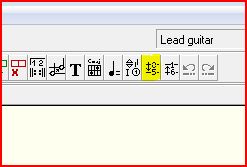
Lesson 47
Notes to Lesson 47
Lesson 47 is all about a new position for riffs. This position has the tonic note on the 3rd string. Following our riff naming protocol introduced in Lesson 38, let's call these riffs "Group G" riffs. We'll use these riffs for Ab, Bb, C, Db and Eb (and A, D, and E as well). Mickey gives us six riffs, bringing our total to 18. In addition, Mickey wants us to transpose all 12 of the Group E and B riffs to Group G. I'm surprised that Mickey didn't ask us to transpose these "Group G" riffs to both Group E and Group B. In fact, just as a lark (but not written and included here), the Group G riffs all play as a theoretical "Group D", and most as a "Group A" (Tonics on the 4th and 5th strings). Well, guess what? In the upcoming Appendices I have included a section on how to use these Group G (and Group D) riffs in writing bass parts in your group arrangements.
Are we getting lost between all the groups? I hope not.
In 1955, all that transposing of keys and positions was a lot of manual work. But with TablEdit it's a cinch! I've done all the position transposing of all the riffs for you. But it's a skill you're going to need, so let's do one together. Let me show you how easy it is.
Step 1 Go to Lesson 41 (Transposition of Riffs) and select the TEF "Lesson 41 - Riff #1 - Bb.tef". Actually, we can use any TEF, but since our target is Bb, let's use a Bb TEF.
Step 2 Highlight strings 1 through 3 in all measures. See the Figure "Step2. Highlight Strings 1 through 3".

Step 2. Highlight Strings 1 through 3
Step 3 Transpose the position to strings 3 through 5 by left clicking the Down Position Shift icon two times. See the Figure "Step 3. Location of the Down Position Shift Icon" for the location of the icon.

Step 3. Location of the Down Position Shift Icon
Step 4 Refer to Figure Step 4 to see how your TEF should look after Step 3. Note that the musical notes in the standard notation haven't changed, but the position on the fretboard has.

Step 4. How the TEF should look after Step 3.
Step 5 We need to drop this an octave or 12 frets. The easy way to do this is to look at the first note (15) and subtract 12 from it. Then type the "-" key (the minus key) 12 times. When that note changes to "3", we're there! See the Figure for how the TEF looks after this operation.

Step 5. The TEF Transposed an Octave
Step 6 Note from the Figure in Step 5 that the Grace Note highlighted in the 4th measure did not survive the move without injury. Type <alt g> and select "Hammer/Pull-off" and Position 4 (the grace note hammers from the 4th fret to the 5th of the 5th string). Then left click on the "OK Button". Refer to the Figure "Step 6. Repairing the Grace Note".
Step 6. Repairing the Grace Note
Step 7 As a final clean-up, let's change the stems to get them pointing up. Put the cursor on any string in an nonused position and type <ctrl a>. All the measures are highlighted and now we can type "a" to have the stems pointing up. Let's rename our TEF and save it. Figure "Step 7. Our Finalized TEF" shows the finished TEF.

Step 7. Our Finalized TEF
Note that our TEF is identical in notes, but an octave lower than the starting TEF. Also, note that the notes fall between frets 3 and 6. Grace notes don't transpose very well in any method of transposition, so be on guard for that and make manual changes. The relationship between the starting TEF's grace note and its host note and the transposed TEF's will always maintain the same relationship. This also goes for mordents, trills, etc. from the <alt g> menu.
Wasn't so bad was it? There's several other ways of doing the same thing including a menu feature called "Transpose". But for me, this method creates the least amount of work, including proofreading, to get the job done.
Bonus TEF's: I've included a Bonus TEF with all 18 riffs side by side in Bb as a one-TEF reference. Throughout the solo section of the course Mickey encourages us to write and modify our own riffs, with his riffs as a starting point. So I've also duplicated the Bonus TEF called "All Riffs Slightly Modified". There on a number of Mickey's riffs, I've made minor changes. I also included a module with the original riffs so that you can see what I've modified and maybe it will give you some ideas for your own riffs. Make sure you mute the original riff module to hear the changes.
Once again, there is quite a bit of work for a week (128 TEF's!), so with the exception of the two bonus TEF's, I won't add to the burden with additional exercises. Please share any of your creations that you are proud of!
Just keep it FUN!